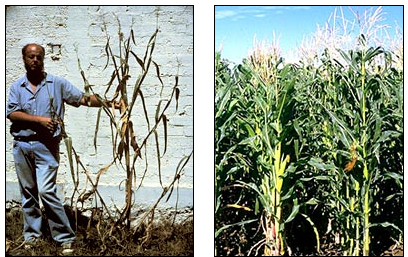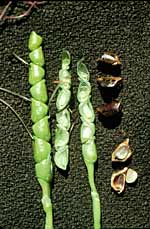
The leggy vegetation and small ears of the teosinte plant might not seem to be of much economic value. But, in fact, they may contain a genetic goldmine for the domestic corn market. Scientists have discovered that domestic corn and wild teosinte are evolutionary cousins — research suggests that native Americans domesticated maize from wild teosinte stocks using artificial selection — and so genes found in teosinte may also be useful in corn.
Corn viruses can seriously damage crops and the profitability of farms. The Maize Chlorotic Dwarf Virus, for example, stunts plants and decreases yields. Plants resistant to this virus and others have been a boon to corn growers.
But if these resistant varieties don’t already exist, how can they be developed? Resistant corn strains could be genetically engineered. But genetic engineers can’t actually create new genes — they can only move around genes that already exist. In order to develop virus-resistant corn varieties, an engineer or breeder would need a source for these resistant genes.

In this case, an evolutionary perspective — one that considers the history of corn — pointed scientists towards teosinte for these genes. Although they don’t look it, evolutionary studies indicate that wild teosinte and domesticated corn are close relatives.
In 1977, Rafael Guzman, a Mexican biologist, discovered a previously unknown teosinte species, Zea diploperennis (shown at left), in South-central Mexico. This species happens to carry particularly useful genes—including genes for resistance to seven viral diseases that affect domestic corn. Using these genes, scientists developed virus-resistant domestic corn varieties.
Understanding the evolutionary history of domestic crops and other organisms helps scientists identify valuable stores of genetic variation.
